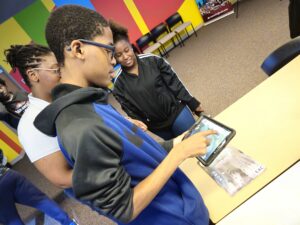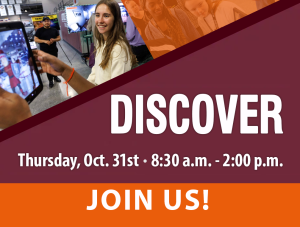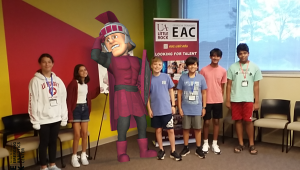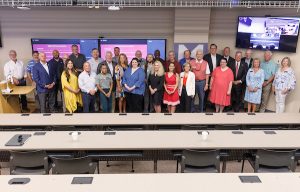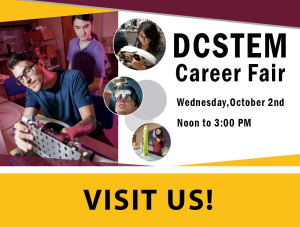Our Innovate for Good competition challenges 6th – 12th-grade girls to team up and work together to develop an app, website, computer program, 3D printer template, or anything innovative (that incorporates technology) that they’re inspired to create! Teams are allowed to have up to 4 members. Each submission must either directly benefit, or provide a service to address a community need that is predetermined by Girls of Promise®. Innovate for Good allows girls to use their tech skills to make something that helps others!
Judges will select five finalists who will be invited to our Girls of Promise® Conference which will consist of about one-hundred and thirty 8th grade girls. Our conference attendees will vote on a Innovate for Good winner at the end of the night!
Please note: Girls are allowed to both attend the conference and compete in Innovate for Good.
2023 Innovate for Good Challenge: Mental Health in America
This year, we are focusing our challenge on an issue within the state of Arkansas that has dramatically increased in the last few years – Mental Health. In the first year of the pandemic prevalence of anxiety and depression increased by almost 25%, and both are still the number one reported issue of mental health.
Currently, 1 in 5 American adults and 1 in 6 children are experiencing some form of mental illness. Though mental health care availability has returned to pre pandemic levels, there is still a critical shortage of mental health providers.
In addition to a lack of qualified providers, there is still a negative stigma attached to mental health. Stigma often comes from a lack of understanding or fear. Inaccurate or misleading online information contributes to the stigma. Stigma can be represented in the form of stereotypes, prejudices, and discriminatin. A 2016 study on stigma concluded “there is no country, society or culture where people with mental illness have the same societal value as people without mental illness” (Rossler). For more about the effects of Mental Health Stigma read this article: Stigma, Prejudice and Discrimination Against People with Mental Illness
Self care has emerged as a viable treatment for some mental health disorders. There are seven pillars to self care: mental, emotional, physical, environmental, spiritual, recreational, and social. A well-balanced self-care routine involves each of these, not just one or two. Self care can be something that is relaxing or calming for the person. Examples of self care include: going for a walk outdoors, reading a book, a phone call with a friend and engaging in personal hobbies.
Mental Health Statistics (Mental Health America)
- Millions of adults in the U.S. experience serious thoughts of suicide, with the highest rate among multiracial individuals. The percentage of adults reporting serious thoughts of suicide is 4.84%, totaling over 12.1 million individuals. 11% of adults who identified with two or more races reported serious thoughts of suicide in 2020 – 6% higher than the average among all adults.
- Over 1 in 10 youth in the U.S. are experiencing depression that is severely impairing their ability to function at school or work, at home, with family, or in their social life. 16.39% of youth (age 12-17) report suffering from at least one major depressive episode (MDE) in the past year. 11.5% of youth (over 2.7 million youth) are experiencing severe major depression.
- 22.87% of adults who report experiencing 14 or more mentally unhealthy days each month were not able to see a doctor due to costs. In Georgia (ranked 51), over one-third of adults experiencing frequent mental distress are unable to afford a doctor’s visit.
- 59.8% of youth with major depression do not receive any mental health treatment. Asian youth with major depression were least likely to receive specialty mental health care, with 78% reporting they did not receive mental health services in the past year. In South Carolina, the lowest ranking state, nearly 8 in 10 youth with depression do not receive care.
In the U.S., there are an estimated 350 individuals for every one mental health provider. However, these figures may actually be an overestimate of active mental health professionals, as it may include providers who are no longer practicing or accepting new patients.
The 2023 Innovate for Good Challenge: using technology, develop or innovate an existing solution, service, method or idea that addresses the mental health crisis we are facing in America today.
Please note: 8th grade girls are allowed to both attend the conference and compete in Innovate for Good.Innovate for Good Submissions should be uploaded as a PDF file here: 2023 Innovate for Good
Competition Timeline
March 1, 2023 – Deadline for Innovate for Good team project proposals
March 15 , 2023 – Announce three finalists for 2023 Innovate for Good Challenge
April 7, 2023 – Finalists present at Girls of Promise® Conference
April 29, 2023 – Finalists present their work at the Arkansas State Coding Competition
Go to top
Complete Applications Include:
Cover page:
- Name of the project
- Name(s) Grade(s) and School(s) attended.
(Note teams do not have to be from the same school or grade level)
A 5-10 page paper describing your project.
Essential elements to include:
- Statement of the problem. (cite 2-3 sources)
- An explanation of your brainstorming / planning sessions (in other words, how did you come up with your solution?)
- How does your solution assist in solving the problem you stated above
- How does your solution work?
- What challenges/obstacles do you foresee in implementing or scaling your solution?
- How will you make sure the solution is sustainable?
- Technology use
- What technology (or technologies) did you use in the making of your solution?
- How was the prototype developed?
* The term “solution” is used as a general term for the result of the process of innovation during this project. A solution may be a constructed object, solution to a problem, service, system, invention, event, or an improvement to an existing solution, etc.
*Photos, sketches, diagrams, screen shots (of website/apps) can and should be included in either the How does it work section, and/or the technology used
Projects will be evaluated on technical, practical and creative merits. See attached rubric.
Three finalists will be selected to present their work in the form of a sales pitch, to a panel of judges and students at the Arkansas State Coding Competition in May.

